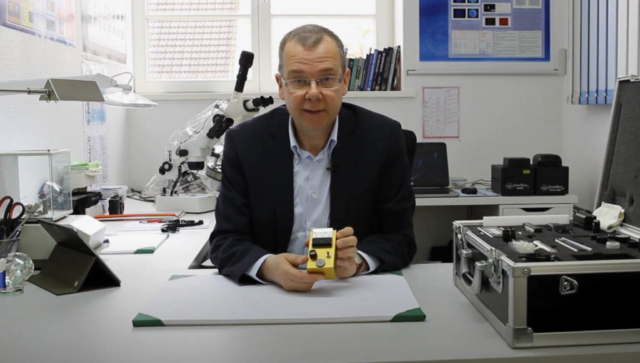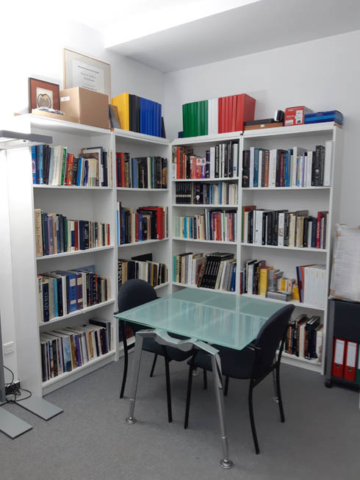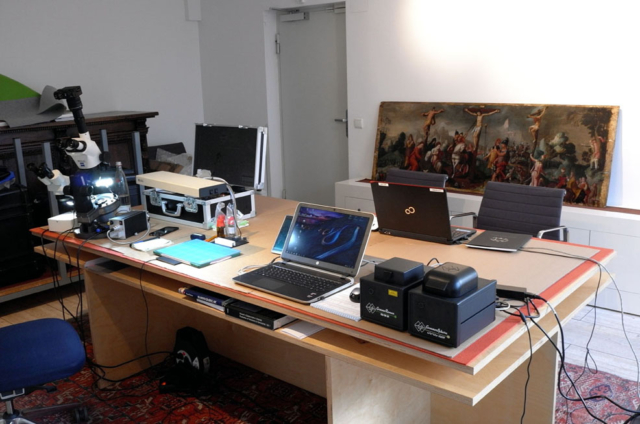The Laboratory
The mobile lab: equipment
Due to the growing international demand for high quality gemstones and jewellery, the market is changing. New and more advanced methods for the manipulation, synthetic replication and composition of gemstones are becoming more and more common, as well as the growing amount of forgeries and objects of questionable heritage. Their detection and identification is possible only with a good and sound training as an appraiser, gemologist and jewellery historian using the appropriate equipment.
My mobile gemological laboratory consists of, amongst others:
- Gemological Microscope (Zeiss / Eickhorst Gemmaster LED)
- Grading Light Eickhorst (5500 und 6500 Kelvin)
- Spectroscope Krüss KL12-1504 (Optical) With Base
- Dichroscope
- Proportionscope
- Idealscope
- Refractometer Eickhorst SR 0.01
- Reflectometer Hanneman
- Diamond Tester Presidium & Others
- Colour Grading Masterset D-P
- Raman- und Photoluminescence Spectrometer (Laser 532 nm)
- GemmoSphere UV-VIS-NIR Spectrometer
- Stereo-Zoom Microscope By Krüss
- Zeiss Tube Adapter
- Ultrasonic Cleaner Elma
- Digital Diamond Guage
- Various Scales (Kern, Sartorius, Tanita)
- Rough Diamond Callipers
- Gold Testing Kit
- GIA Daylight Dock
- Diamond Loupe – 1/10 mm Scale
- Polariscope
- SSEF HPHT-Spotter
- Gem Filters (Including the Complete Hanneman Set)
- Short & Longwave UV Light (Eickhorst Multispec UV-AC)
- 10 x Loupe (Achromatic and Aplanatic)
- Leica, Zeiss, Swiss-Axe
- Cold Light Source With Fibre Optics
- Canon G12 / Canon EOS 750
- Coming Soon: Archaeometric XRF Handheld
Spectroscopic database
Over the years, I have been able to collect nearly 600 spectroscopic signatures of various gemstones during my work in the field. A lot of the very special spectra have been recorded internationally with the help of various qualified gemologists. These spectra been put together in a large database, which is now used by several educational and forensic institutions worldwide.
This database not only lists spectra for different gemstones, but also many types of chemical treatments, heat treatments, synthetics, composites and geographic origin of each gemstone. Some are quite rare, for example, gemstones which have only undergone experimental treatments, and are collector items in their own right.
If your institution or laboratory is interested in acquiring this database, you may contact ST-Japan, (contact (at) stjapan.de) who will provide you with the necessary format of your Raman device.
In a recent case I was presented with a ring set with an emerald, supposedly of Roman origin. As the stones’ inclusions were of Columbian origin (according to all spectroscopic signatures and all other gemological parameters such as fluorescence, refraction etc.), this was obviously impossible as the Americas had not been discovered yet. The Romans sourced their emeralds mainly from Egypt or from the Austrian Habachtal mines. I was able to come to this conclusion with the help of the specialized equipment and the database.
Please note that all procedures are absolutely non-invasive.



